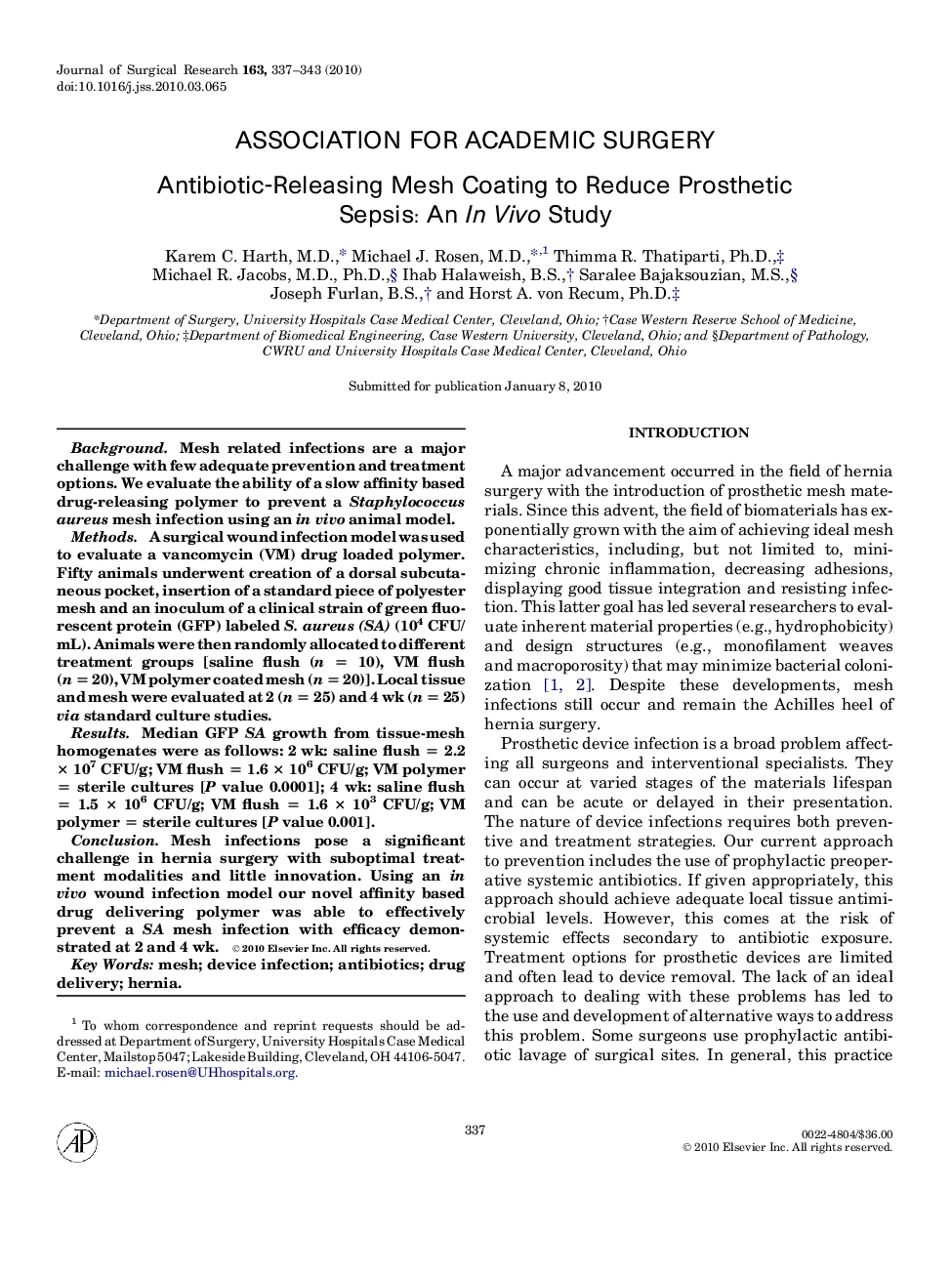| Article ID | Journal | Published Year | Pages | File Type |
|---|---|---|---|---|
| 4303050 | Journal of Surgical Research | 2010 | 7 Pages |
BackgroundMesh related infections are a major challenge with few adequate prevention and treatment options. We evaluate the ability of a slow affinity based drug-releasing polymer to prevent a Staphylococcus aureus mesh infection using an in vivo animal model.MethodsA surgical wound infection model was used to evaluate a vancomycin (VM) drug loaded polymer. Fifty animals underwent creation of a dorsal subcutaneous pocket, insertion of a standard piece of polyester mesh and an inoculum of a clinical strain of green fluorescent protein (GFP) labeled S. aureus (SA) (104 CFU/mL). Animals were then randomly allocated to different treatment groups [saline flush (n = 10), VM flush (n = 20), VM polymer coated mesh (n = 20)]. Local tissue and mesh were evaluated at 2 (n = 25) and 4 wk (n = 25) via standard culture studies.ResultsMedian GFP SA growth from tissue-mesh homogenates were as follows: 2 wk: saline flush = 2.2 × 107 CFU/g; VM flush = 1.6 × 106 CFU/g; VM polymer = sterile cultures [P value 0.0001]; 4 wk: saline flush = 1.5 × 106 CFU/g; VM flush = 1.6 × 103 CFU/g; VM polymer = sterile cultures [P value 0.001].ConclusionMesh infections pose a significant challenge in hernia surgery with suboptimal treatment modalities and little innovation. Using an in vivo wound infection model our novel affinity based drug delivering polymer was able to effectively prevent a SA mesh infection with efficacy demonstrated at 2 and 4 wk.
